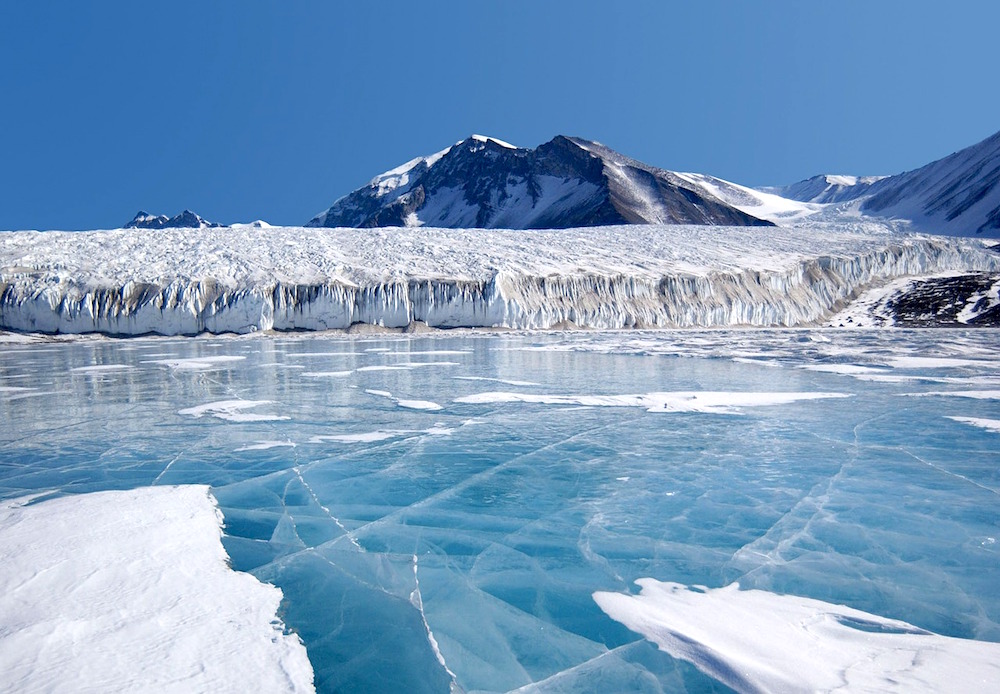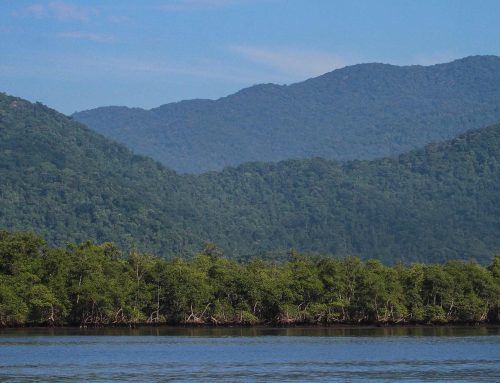Sea ice physicists of the Alfred Wegener Institute (AWI) have developed a new method that allows them for the first time to efficiently determine the distribution and thickness of what researchers call a sub-ice platelet layer.
This several metre thick layer of delicate ice crystals is predominantly found beneath coastal Antarctic sea ice, and at present knowledge about its spatial distribution is very limited. This phenomenon, which is also known as platelet ice, is of central importance in the coastal regions of the Antarctic, influencing sea ice properties and the associated ecosystem in various ways, and serving as an indicator for the state of melting ice shelves. The researchers published their results with open access in the current issue of the journal Geophysical Research Letters.
Several ice forms
Every winter in the Southern Hemisphere, the ocean around the Antarctic continent freezes. The “normal” sea ice formed on the surface of the Southern Ocean, however, is not the only ice that forms in the sea. During the same period, a remarkable habitat develops hidden beneath the solid sea ice cover: a several metre thick layer of loose ice crystals. Some areas underneath sea ice in coastal Antarctica then resemble a cocktail glass filled with crushed ice – the difference being that the crystals in this layer grow to disc-shaped, millimetre-thin platelets.
This phenomenon was discovered by researchers more than a century ago, but for a long time, little was known about this peculiar ice type. In the past decades, researchers have discovered that platelet ice plays a significant role in the sea ice mass balance in some regions around the Antarctic, and that it represents a unique and productive habitat. Countless algae thrive on the platelets, which are food for a myriad of small crustaceans and fish that seek shelter between the platelets.
Hidden nature
Knowledge about the thickness and extent of platelet ice is still very limited, because of its “hidden” nature. Most of the time, researchers only came across it by chance – for example, while drilling through the sea ice to measure its thickness. A team of researchers of the Alfred Wegener Institute, Helmholtz Centre for Polar and Marine Research (AWI), the Jacobs University Bremen and Uppsala University have now succeeded to develop an efficient method to determine the distribution, thickness and volume of platelet ice over large distances.
As the scientists report in a recent issue of the journal Geophysical Research Letters, they used a so-called multifrequency EM device to determine the platelet ice volume. EM is short for „electromagnetic induction sounding“, a geophysical method sensitive to the electrical conductivities within the subsurface. The electrical conductivity of solid sea ice, for instance, differs significantly from that of the salty seawater underneath. This means that, using the EM device, scientists are able to identify the transition from sea ice to seawater, thus allowing them to calculate the ice thickness.
However, the transition between the solid sea ice and the loose platelet layer is much less pronounced. Conventional EM methods that only use a single frequency are unable to distinguish the platelet layer from sea ice or seawater. Using several different frequencies, scientists are now able to reliably determine these transitions without having to drill holes into the ice and measuring the thicknesses using measuring tapes.
„We were really surprised by our own results,“ says AWI sea ice physicist and co-author Dr Mario Hoppmann. „With our new approach, we weren’t only just able to determine the thickness of the platelet layer. We were even able to calculate the fraction of ice within this layer by subtracting the volume of sea water in between the platelets.“
Data Collection
In order to collect as much data as possible, the researchers conducted several surveys across large parts of the frozen Atka Bay. The bay is located in the Weddell Sea, near the German Antarctic research station Neumayer III. The researchers placed the multifrequency EM instrument in a kayak, which in turn was attached to a snowmobile. They moved the tandem across the sea ice of Atka Bay for many days and several hours at a time. „One of the things we noticed was that the evolution of the platelet layer has an annual rhythm,“ says Mario Hoppmann. In June, at the beginning of the Antarctic winter, platelets begin to accumulate under the sea ice. Over the course of the winter, the layer grows; by the end of the winter, in December, it is several meters thick, after which it shrinks again during the summer.
The researchers are convinced that platelet ice plays an important role in the ice regime of the Antarctic. After all, the seasonal sea ice in Atka Bay freezes to an average thickness of two metres in the winter. The platelet layer underneath, however, reaches an average thickness of five metres over the course of a year. In some places it was up to ten metres thick. This means that a significant amount of the ice exists in the form of platelets. „To understand the situation of the Antarctic sea ice and to assess a possible influence of climate change, it is likely that more account must be taken of platelet ice,“ says Mario Hoppmann.
It is not currently possible to properly assess the significance of the platelet ice across the Antarctic. The new findings give cause for hope that its distribution and therefore also its role will soon be understood to the same extent as its formation.
Platelets, which later accumulate in the platelet layer, form beneath the ice shelves of the Antarctic, those parts of the mighty ice sheet that float on the sea. The platelet ice cycle begins as salt-rich water in the coastal ocean sinks and slides underneath the ice shelves, which it then slowly melts. The result: The melted fresh water mixes with the salty ocean water underneath the ice shelves. On the surface of the sea, this water mix would freeze immediately, because its temperature is well below the surface freezing point. Because of the high water pressure in the depth of the sea, the mix initially stays liquid – physicists call this a „potentially supercooled“ state.
Because this water mass has a lower density than the surrounding seawater, it slowly rises at the base of the ice shelves. The water pressure decreases and as soon as a critical shallower water depth is reached, tiny little ice crystals start to form. These then grow to form those delicate ice platelets that later accumulate as platelet ice underneath the sea ice at the surface.
The study was published in open access format under the following title in the journal Geophysical Research Letters: P. A. Hunkeler, M. Hoppmann, S. Hendricks, T. Kalscheuer & R. Gerdes, 2015: A glimpse beneath Antarctic sea ice: Platelet layer volume from multifrequency electromagnetic induction sounding. Geophysical Research Letters. DOI: 10.1002/2015GL065074; Link: http://onlinelibrary.wiley.com/doi/10.1002/2015GL065074/full






Hinterlasse einen Kommentar